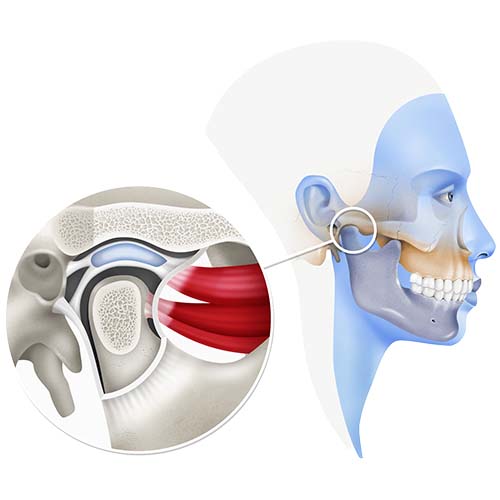Temporomandibular Joint (TMJ)
The right and left TMJs which are located just in front of the ears; connect the lower jaw (mandible) to the rest of the skull. These joints allow for the movement of the lower jaw during function, like eating and talking. Sometimes the joints can become symptomatic and cause pain or discomfort.Book Your Appointment

What Issues Can Be Caused By (TMJ)?
Many people suffer from TMD – ‘temporomandibular disorders’. These disorders of the jaw muscles, TMJs, occlusion (bite), and/or the nerves are the cause of teeth and facial pain. TMD can also cause mild to severe headaches and ear aches.
People who have developed a habit of clenching or grinding their teeth, especially at night, can be more at risk of having pain/discomfort in their face, jaw, joints, and teeth.
What Are Some Causes Of TMJ Disorder?
There are numerous causes for a TMJ disorder; however, many common reasons are related to rheumatic diseases or jaw injuries that affect joints like arthritis. Tension in the neck or head can contribute to the disorder, as well as habitual tongue thrusting. Other habits that could start a TMJ disorder include jaw clenching, and teeth grinding. Poorly fitted dentures can also cause aggravation in the mouth and jaw, which can lead to disorder.
Common Temporomandibular Joint Treatments
- TMJ splint – An appliance worn in the mouth to support and decompress the TMJs.
- Neuromodulator (ie. Botox) injections in certain muscles of the face and/or jaw.
Frequently Asked Questions
Definitely see a dentist for TMJ, it may be out of the scope of the doctors experience
Treatment costs will depend on what is recommended by the dentist.
